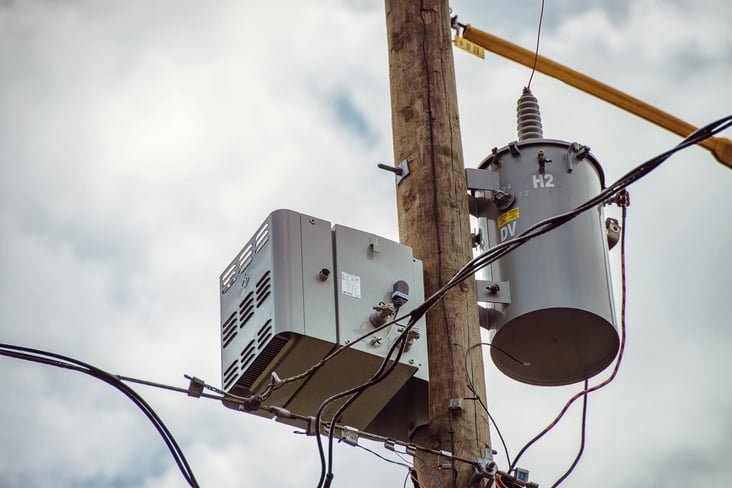This post is one in a series featuring the complete slate of advanced energy technologies outlined in the report This Is Advanced Energy.

Voltage and Volt-Ampere Reactive (VAR) Optimization (VVO) is a smart grid-enabled utility application. VVO controls the flow of power on the distribution system to increase efficiency and reliability, reduce distribution energy losses, and accommodate new power flows, such as those originating from distributed generation. By providing more precise voltage control, VVO reduces total energy consumption without compromising service quality.
Distribution line voltage drops gradually with distance from the substation due to resistive losses in the wires. Historically, utilities have had to use estimates to ensure that all customers receive power within the voltage limits required to operate electric devices. This requires starting with higher than optimal levels to keep voltage from dropping below minimum thresholds by the time it reaches the customers farthest from the substation. By using dynamic control, VVO allows distribution lines to maintain lower overall voltage without impacting service quality. Power regulators, like those from Gridco Systems (pictured), can boost secondary voltage and prop up low voltage points, providing a significant opportunity for incremental VVO savings.
Increased market penetration of VVO is expected as applications verify the benefits. The Snohomish County Public Utility District in Washington State invested $4.6 million in a Conservation Voltage Reduction system (an application of VVO), which resulted in better voltage quality and energy savings of approximately $600,000 per year. Similarly, Dominion Power in Virginia was able to reduce total energy use by 2.8% through voltage optimization. North American shipments of VVO control systems are projected to increase from 50,000 units in 2013 to over 100,000 units by 2018.
In addition to energy and cost savings, VVO provides better control, creating a more intelligent, efficient, and stable distribution system. An impact analysis by the National Electrical Manufacturers Association found that VVO is able to reduce distribution line losses by 2%-5%, and a Department of Energy study of VVO concluded that the technology could reduce distribution line losses by more than 5%. Commonwealth Edison, an Illinois utility, found that voltage optimization could reduce electricity consumption by 2%, with a levelized cost of saved energy of less than 2 cents per kWh, well below the cost of purchased energy. For every 1% reduction in voltage, VVO reduces overall system demand by roughly 1%. This not only reduces energy demand, but also defers investments in new generation, transmission, and distribution capacity.
Learn more about transmission and all other aspects of advanced energy in the free report available below:
